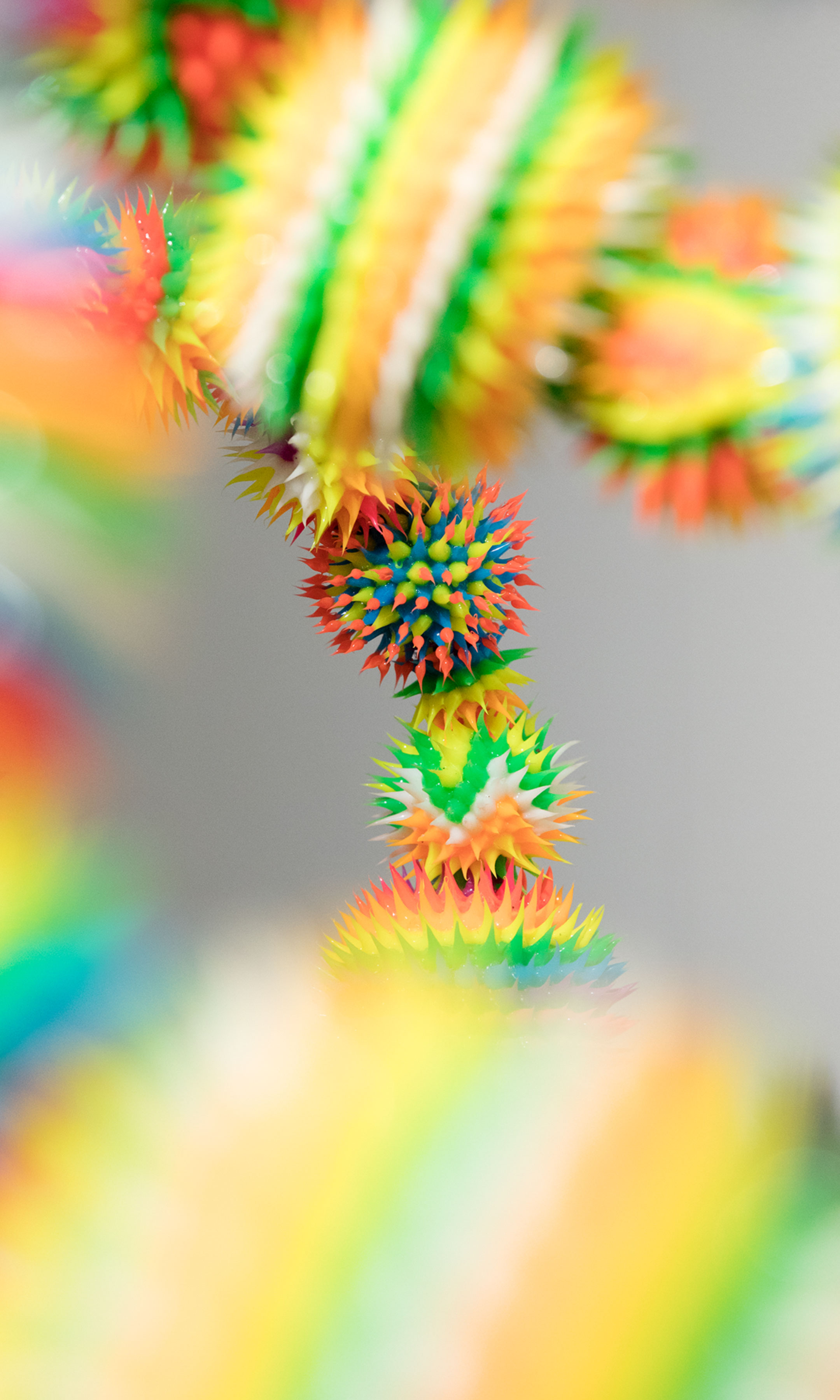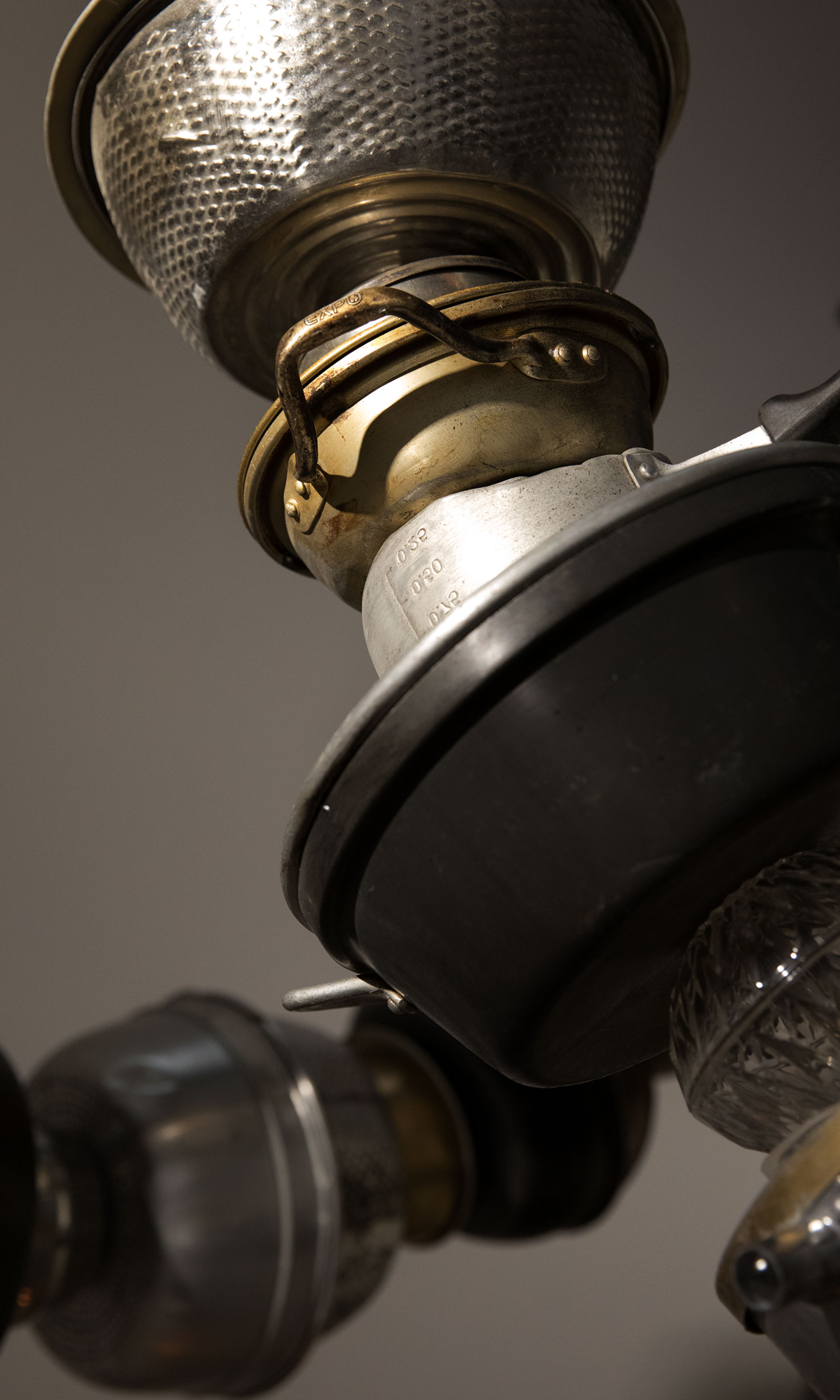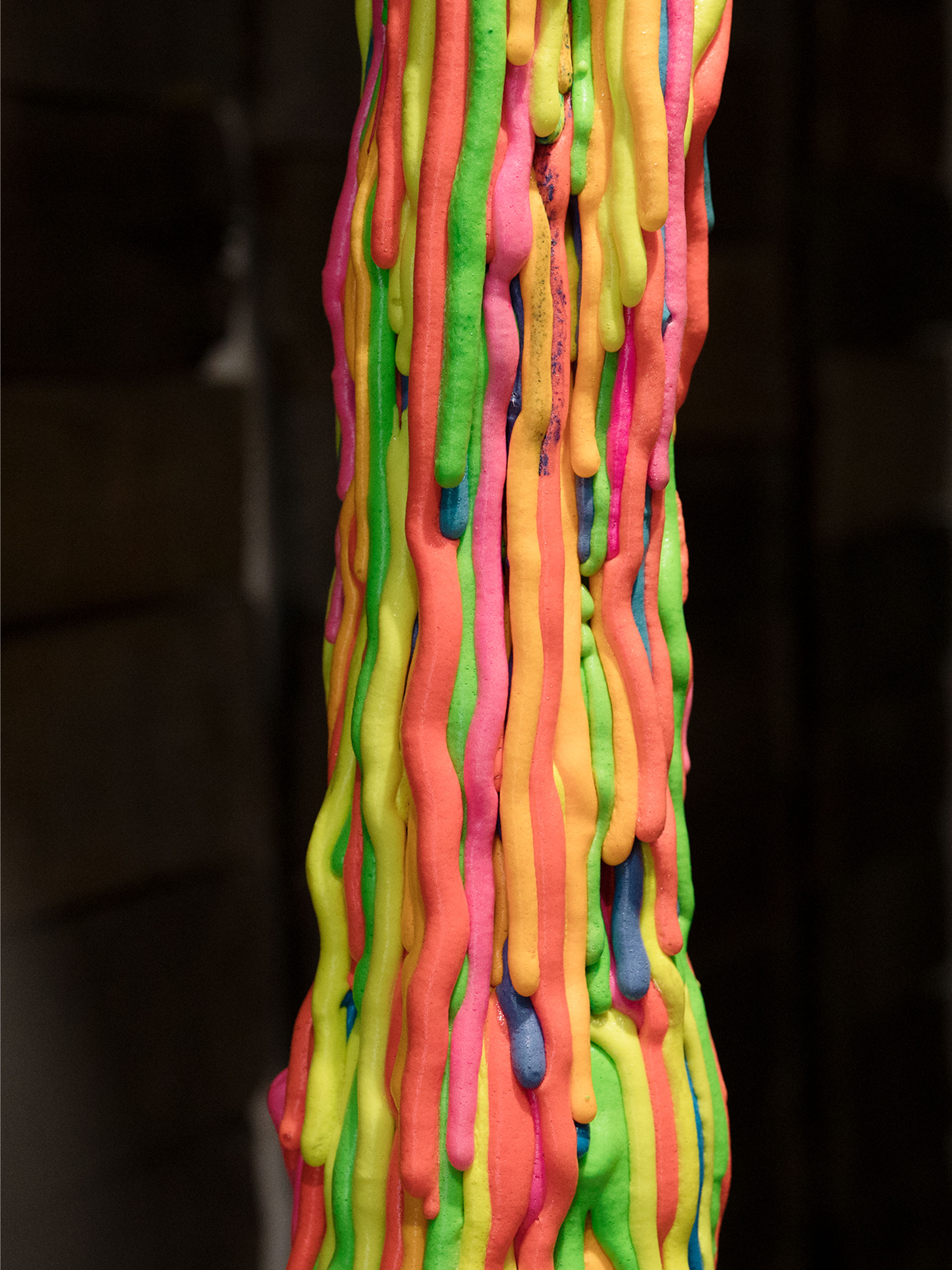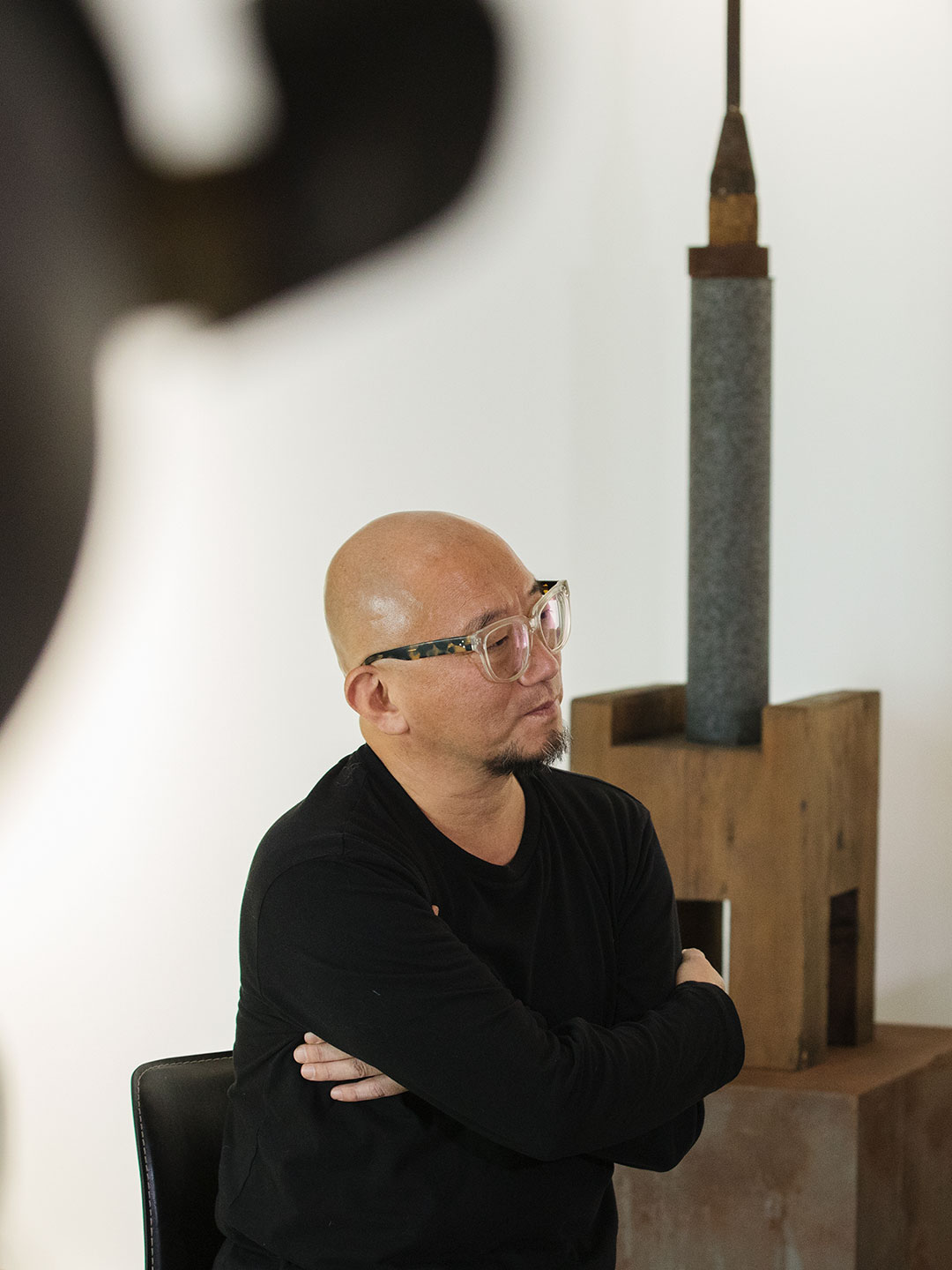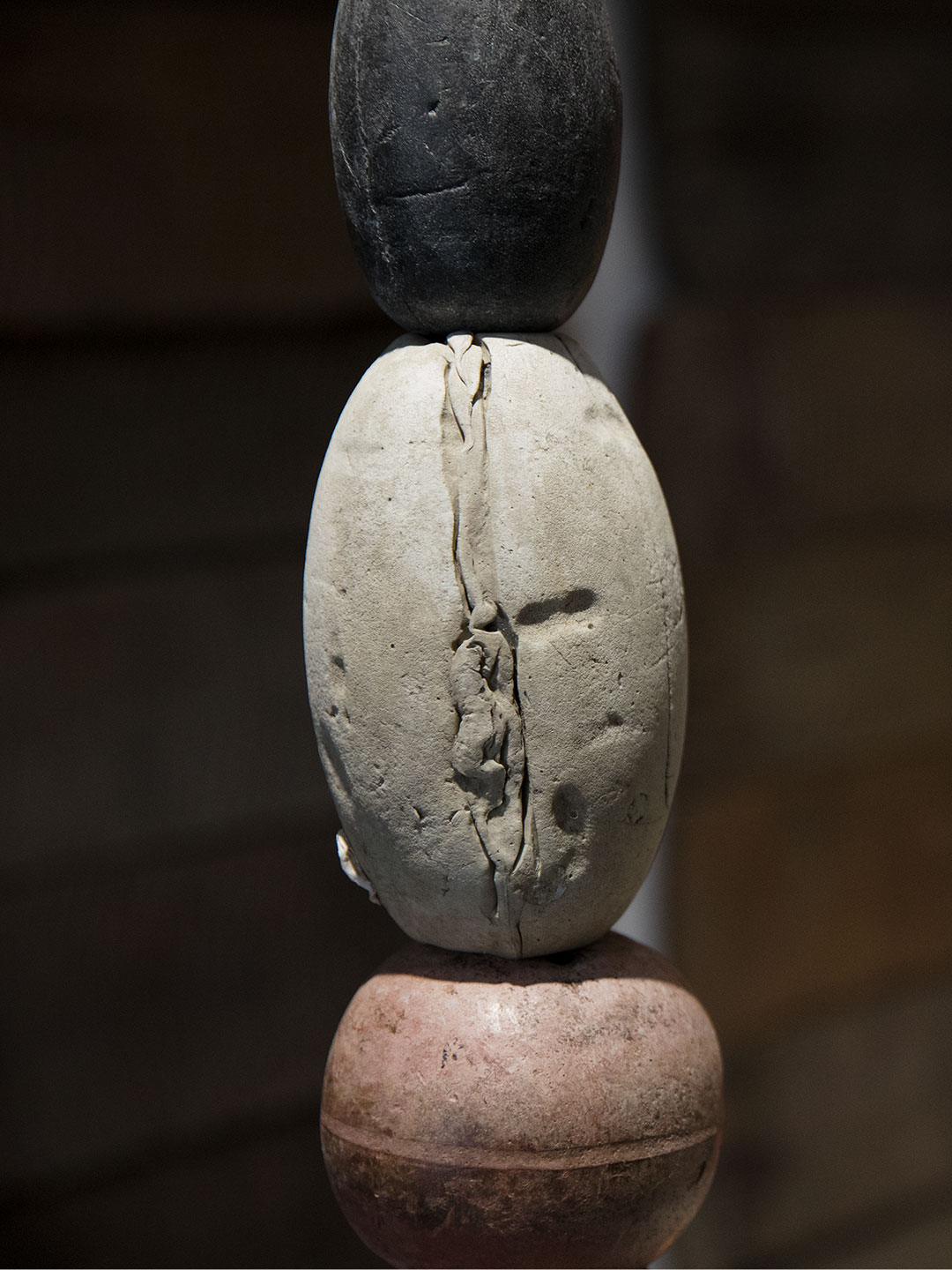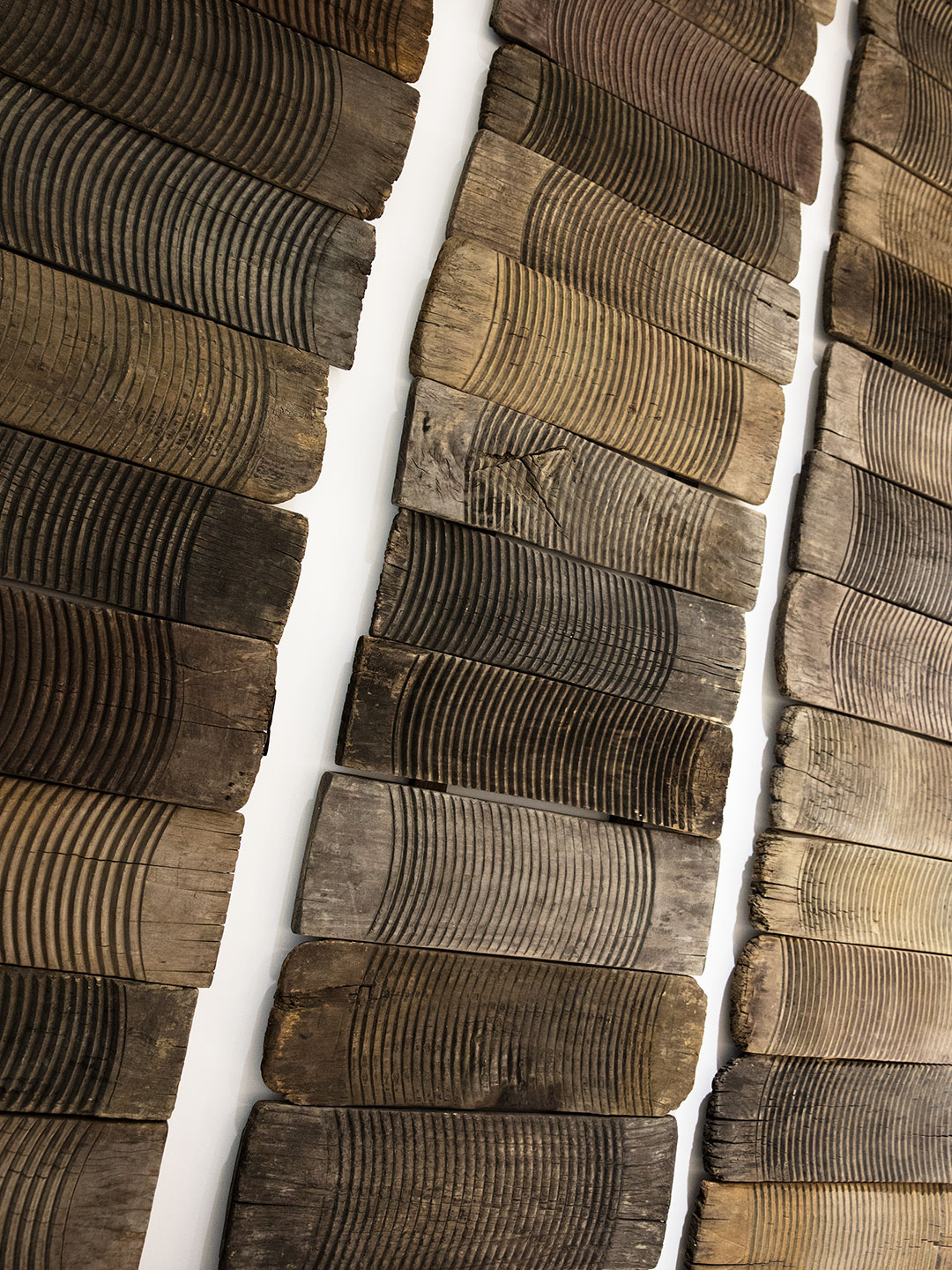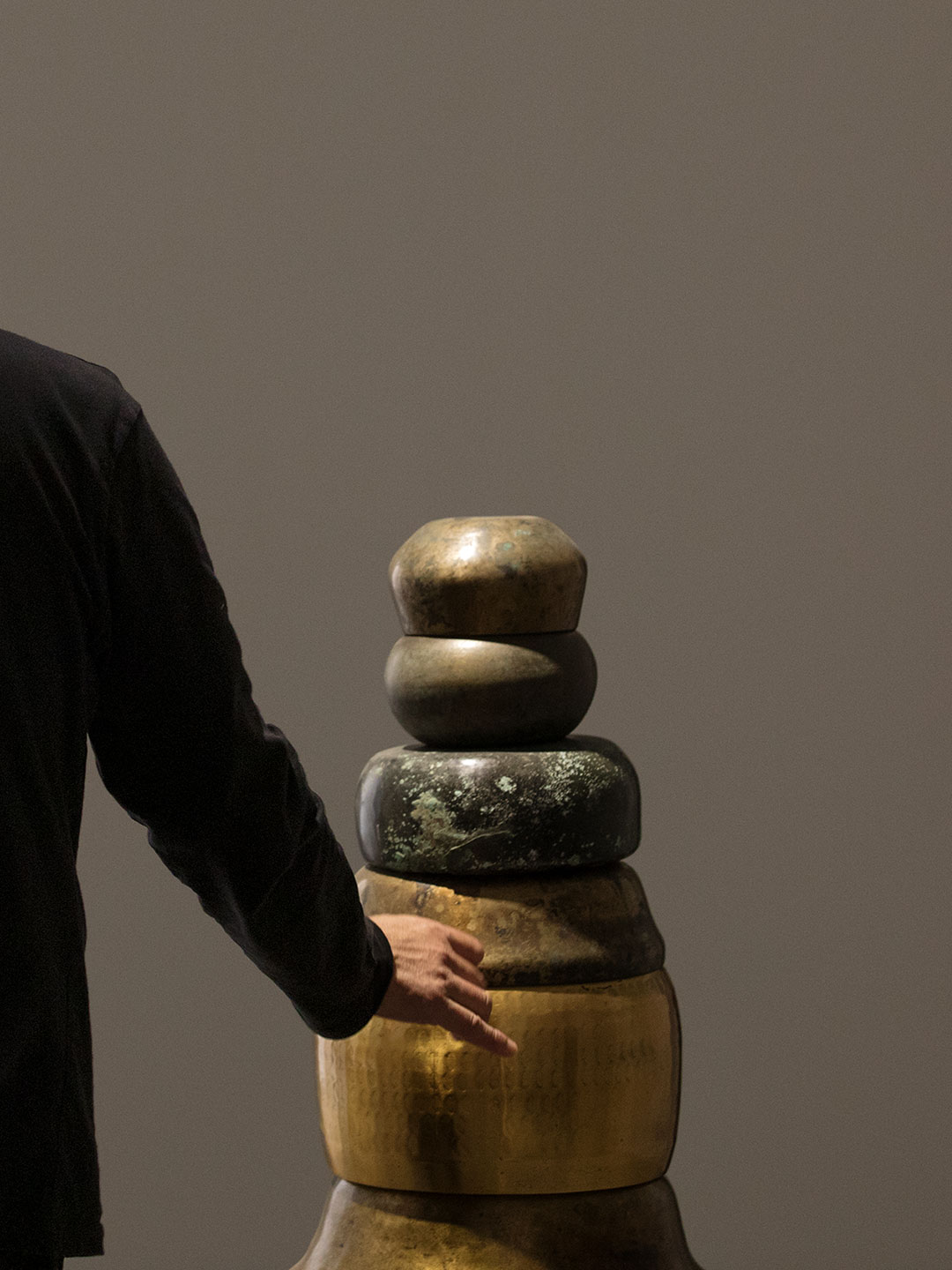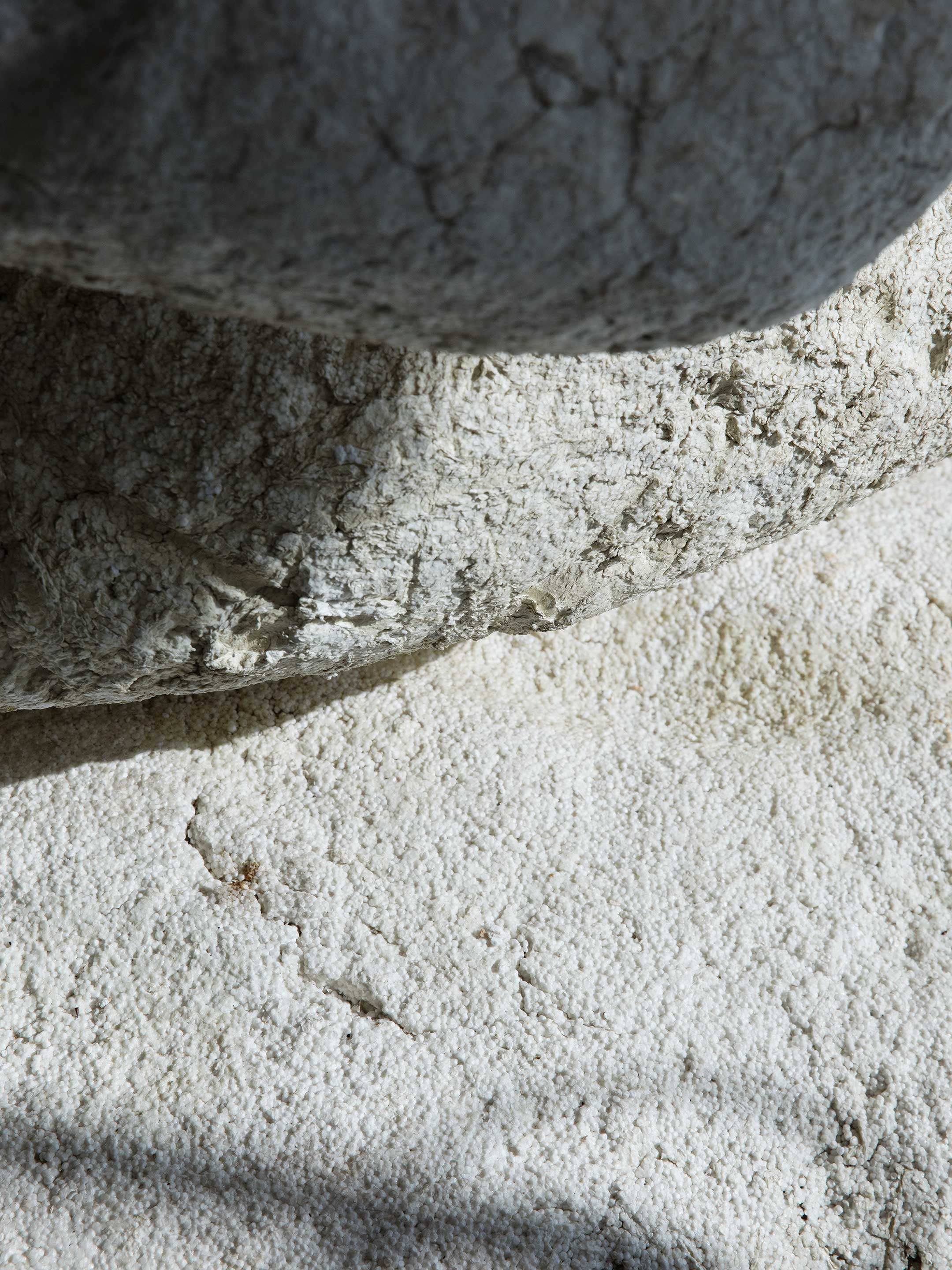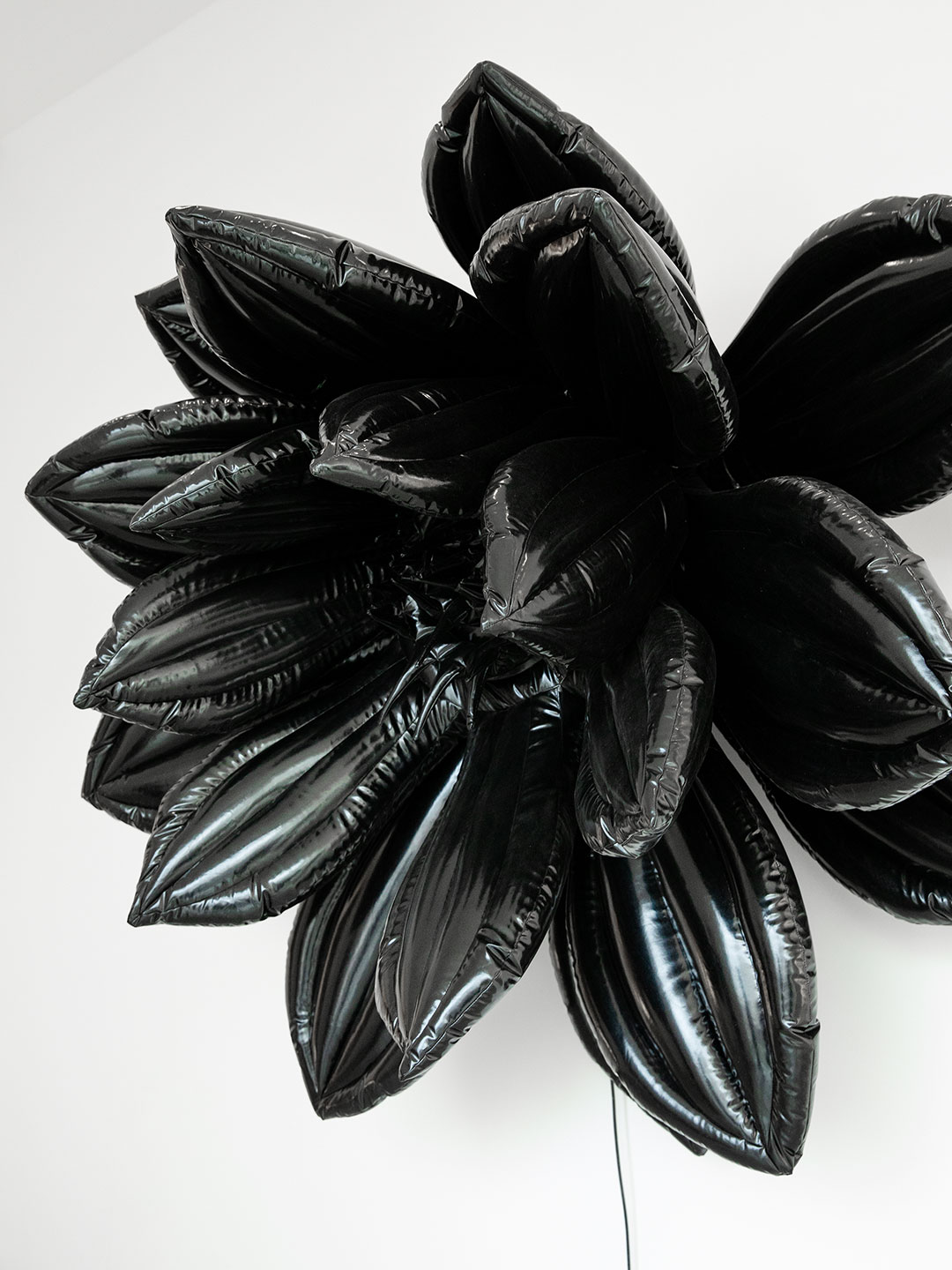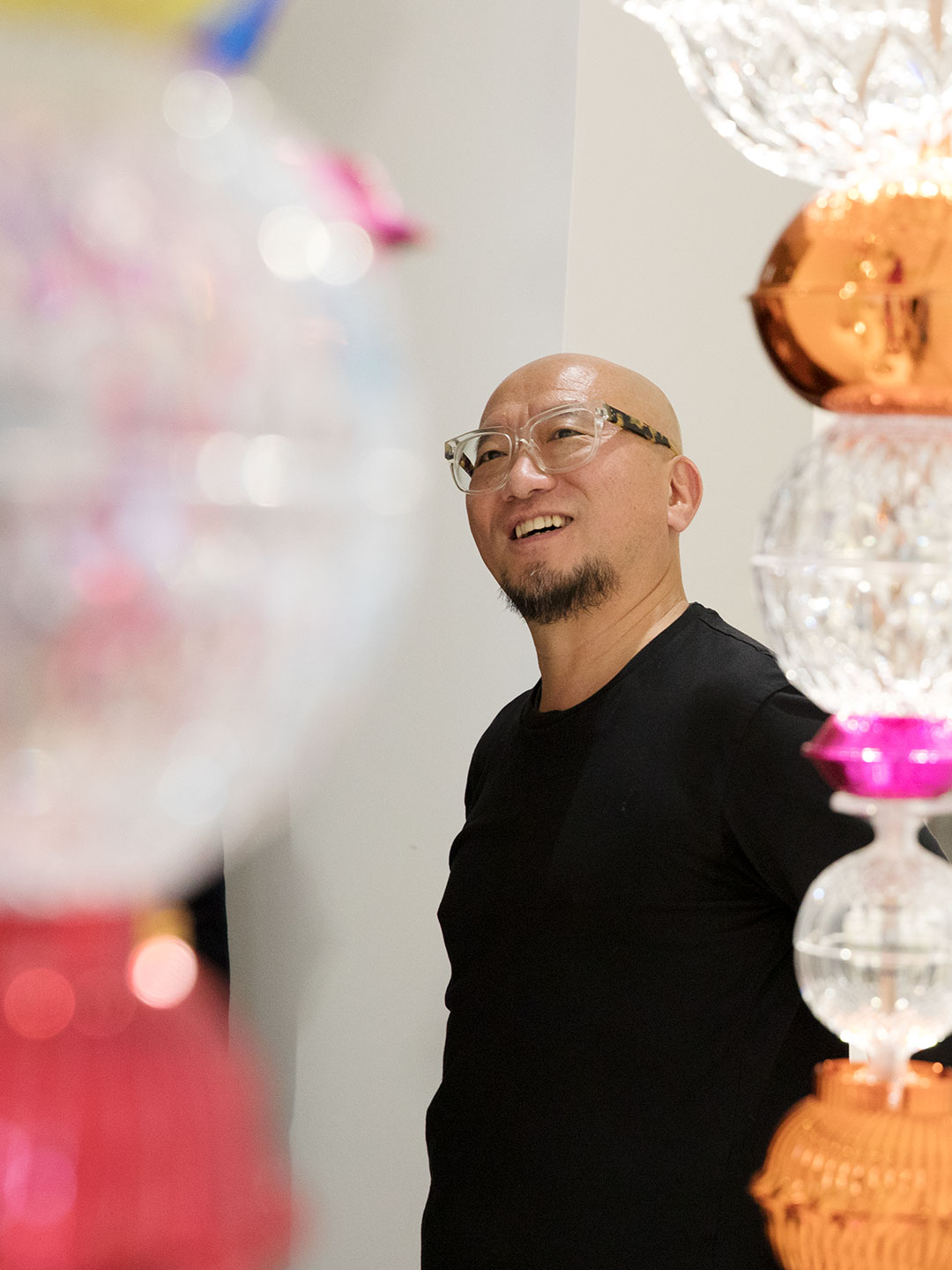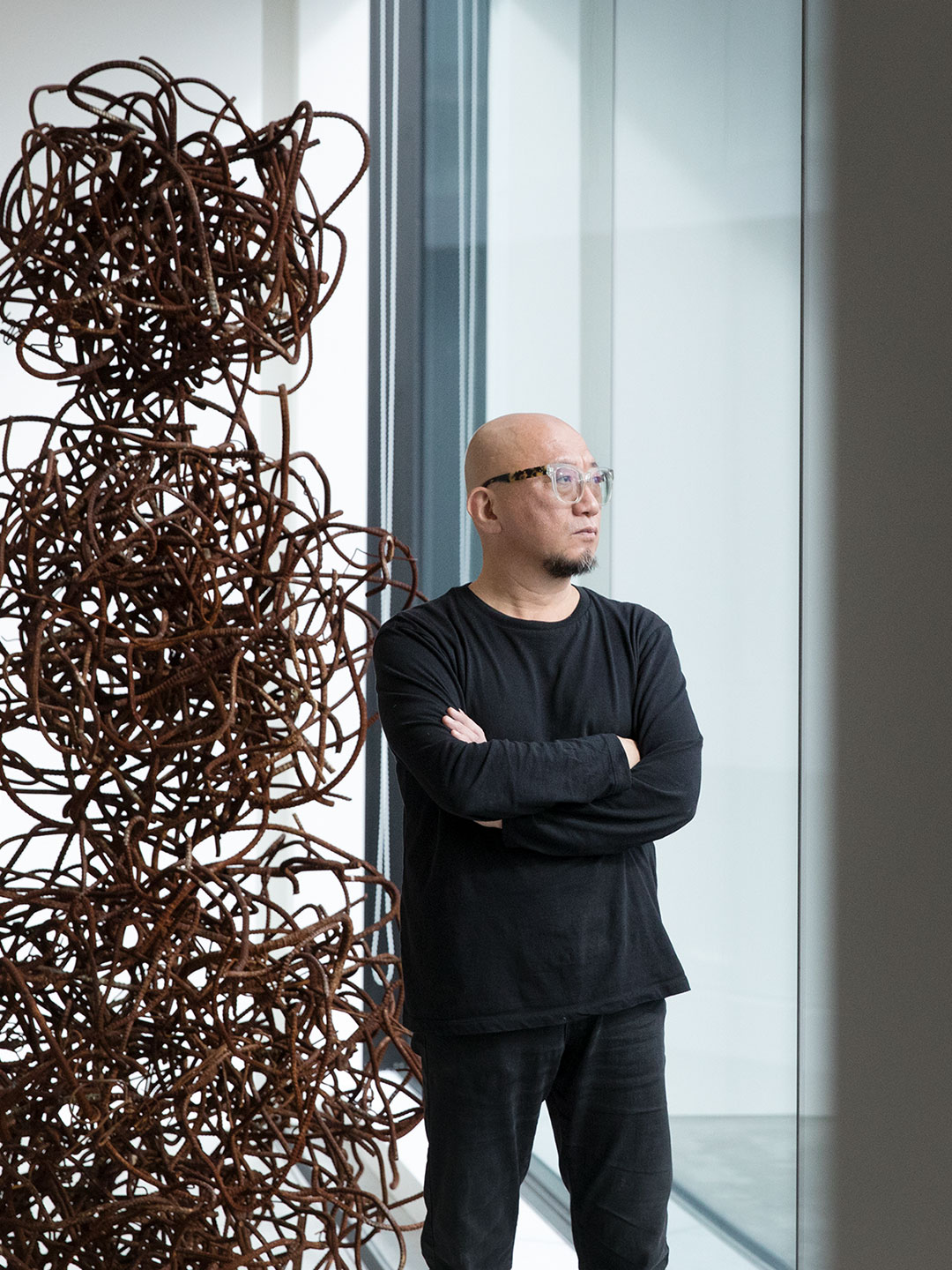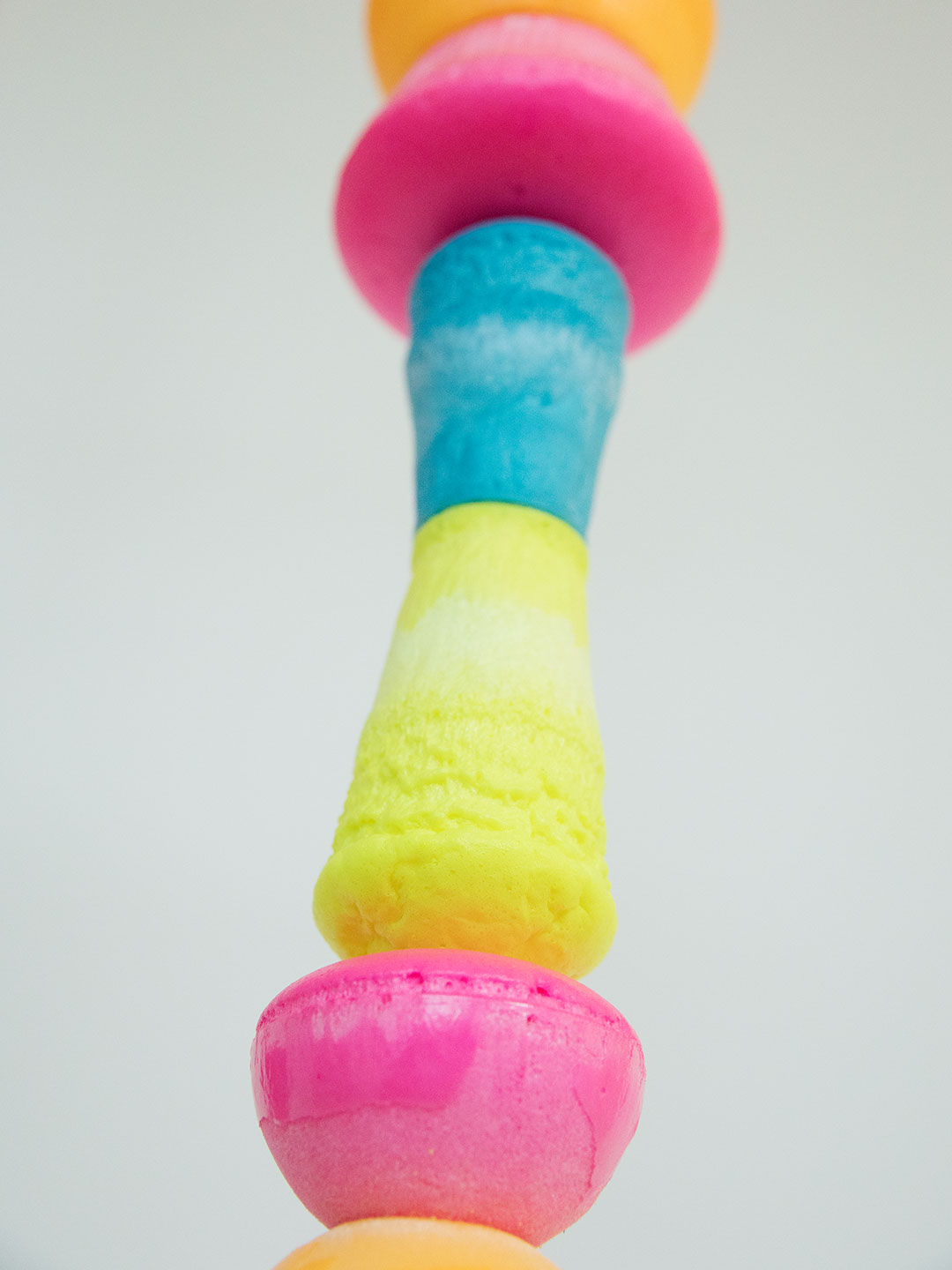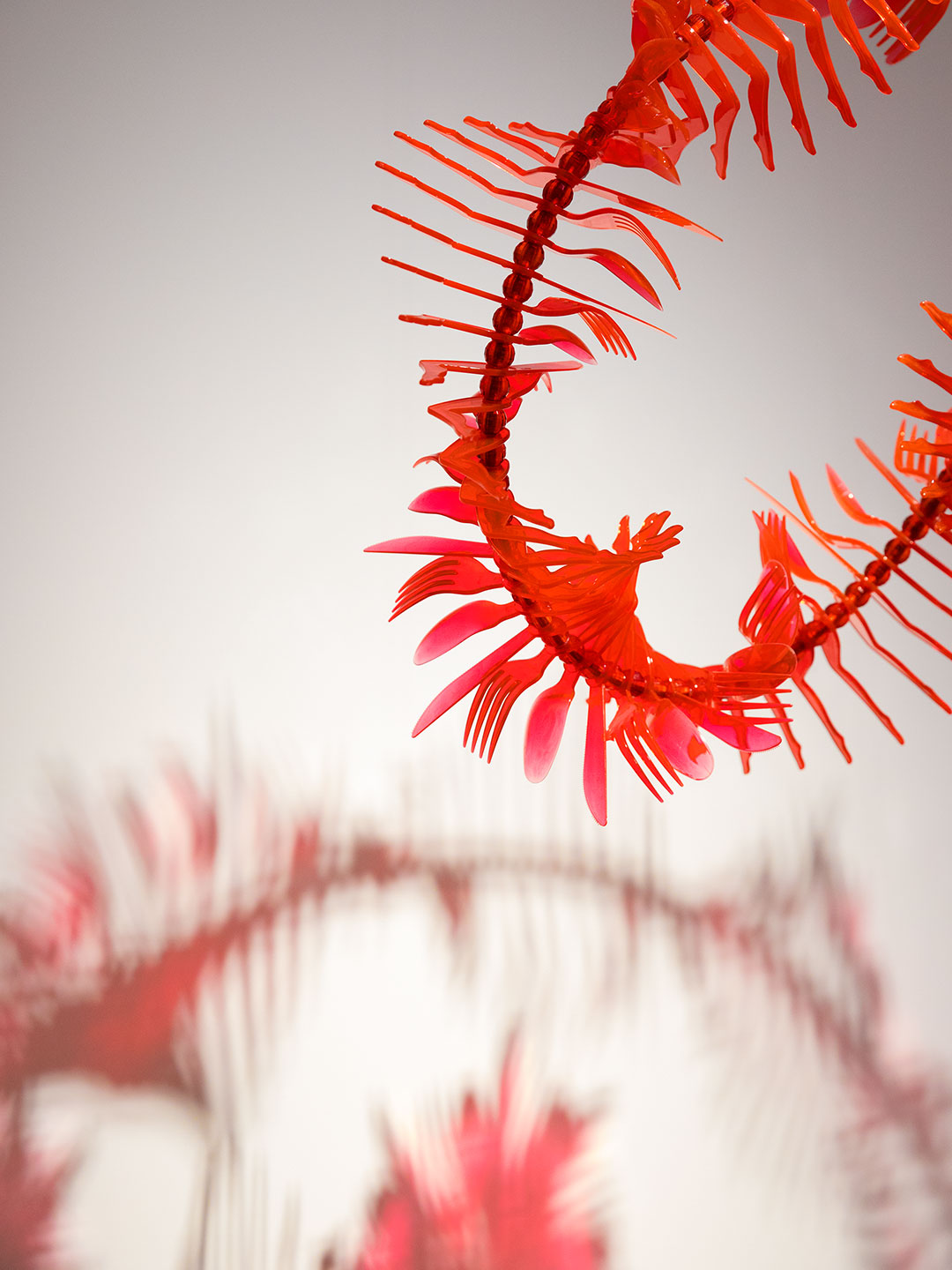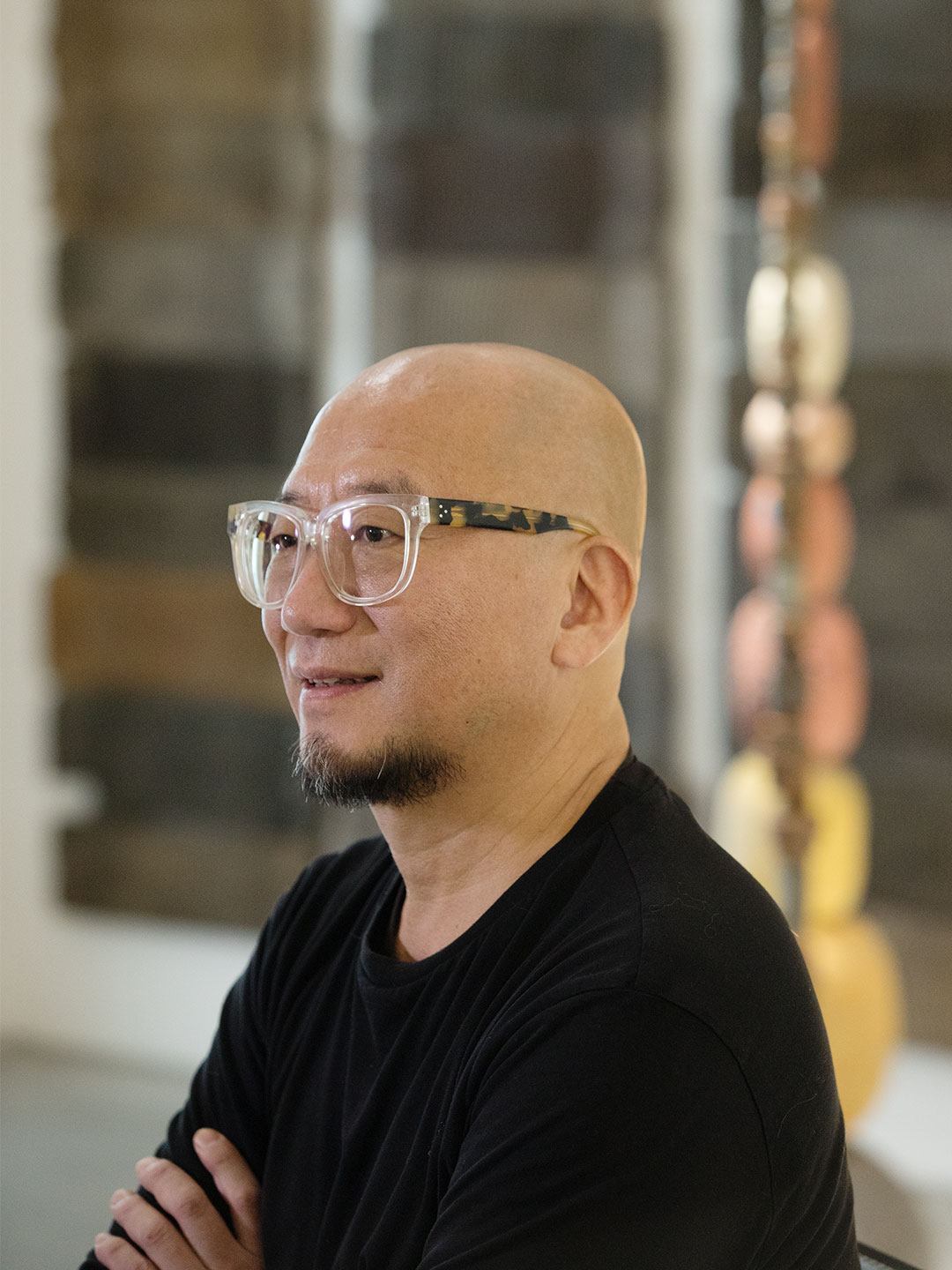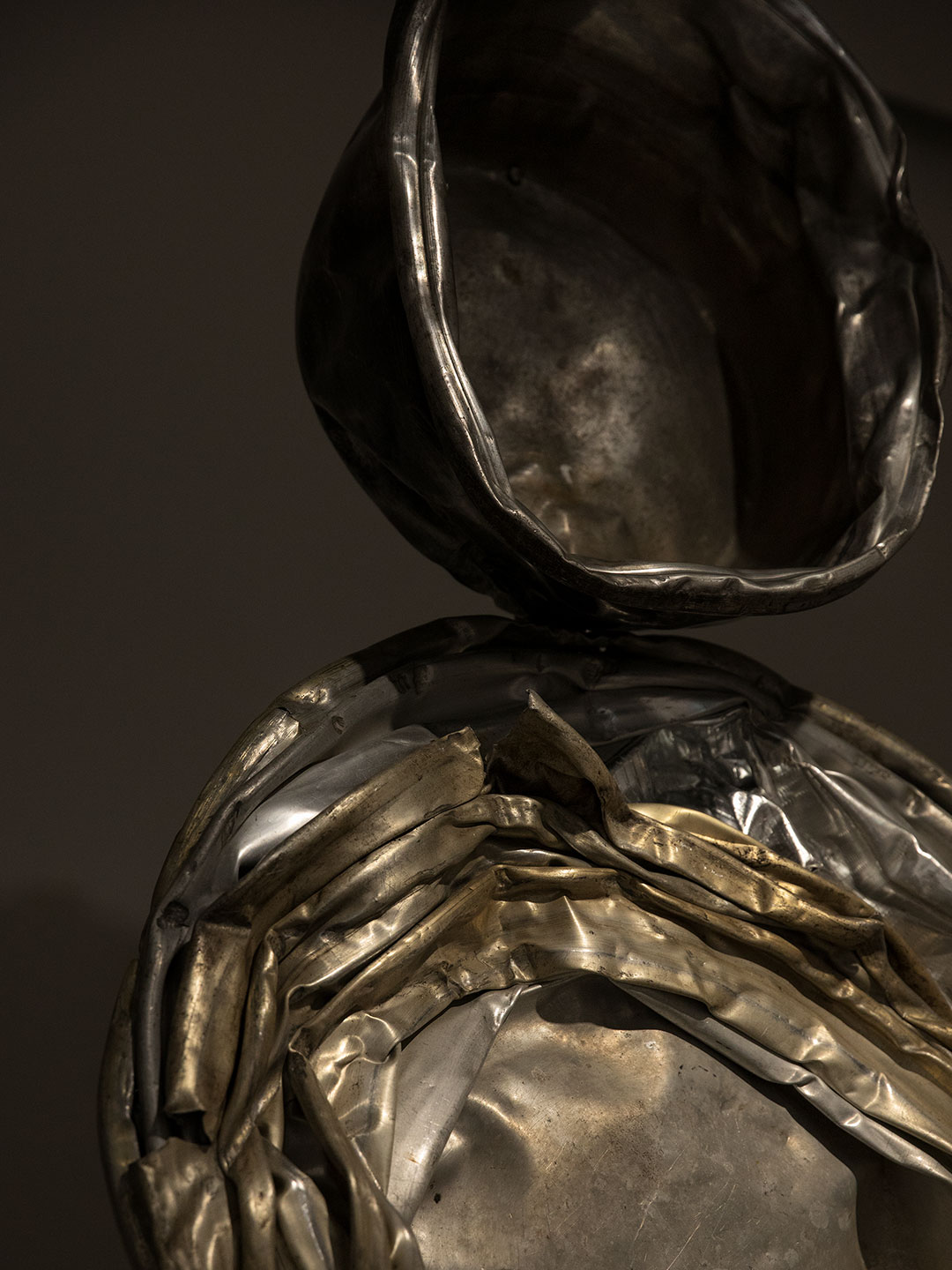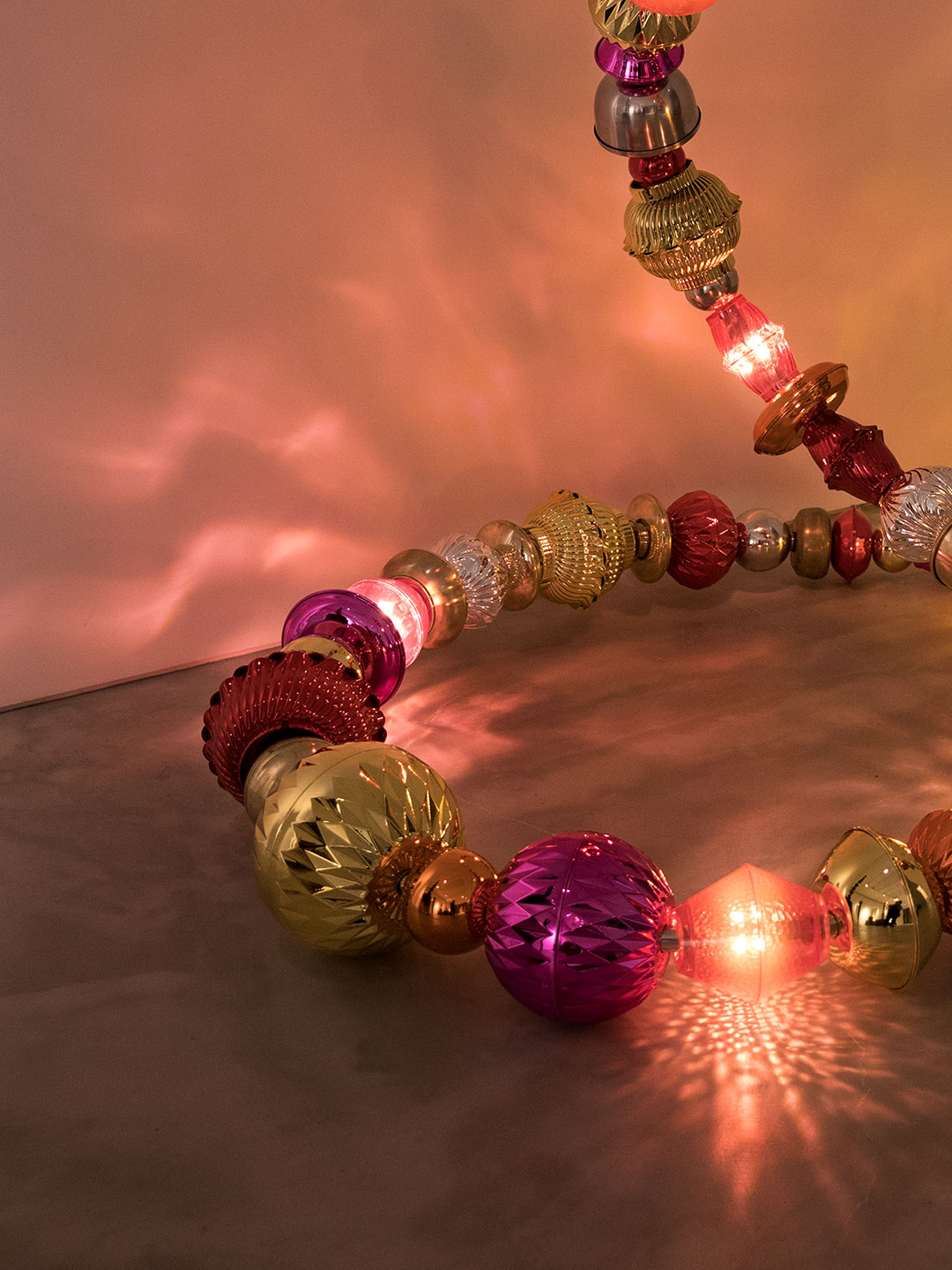
Choi Jeong-hwa
Blooming Matrix Exhibition


-
-
Art—Everything can Bloom Like Flowers
-
Choi Jeong-hwa’s works are all made either from common-or-garden items essential to everyday life, or long-used items that are no longer needed. Giving such objects a new lease on life, Choi’s works thrum with a special vitality. Through this interview with the artist, GYRE GALLERY director Takayo Iida attempts to put his finger on what exactly makes his creations so appealing.

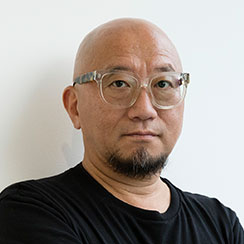


-
Anything can become art, and anyone an artist.
-
Saving memories, creating memorials in hearts
-
Art that’s connected with everyday life enlivens you.
Edit:EATer

Anything can become art,
and anyone an artist.
- I
- Welcome to GYRE GALLERY. You’ve often exhibited your works in the white cube spaces of large art museums. How do you feel about holding an exhibition here in GYRE GALLERY as opposed to such venues?
- C
- This is a shopping building, but it also houses artistic and cultural spaces. That’s what makes GYRE interesting. Since my works use everyday objects, they also have something in common with shopping.
- I
- I must admit that on walking around GYRE with its fashion boutiques and various other shops after viewing your exhibition, almost everything in them comes to look like one of your works. Your exhibition makes wandering around the whole GYRE building much more fun. In that sense, I think it’s unlike any previous exhibition we’ve held here.
- C
- Well, anything can transform and come to look like art. It’s been my view from decades ago that anything can become art, that anyone can become an artist.
- I
- Facing Omotesando as it does, GYRE can’t help but give you a whiff of Tokyo street life. What thoughts you have about Tokyo as a city?
- C
- So far, I’ve undertaken projects in Towada, Shodoshima, Kirishima, and various other places around Japan, but Tokyo strikes me as being really packed with artificial things. Artificial, chemical, robotic. It was this impression that prompted me to create playground equipment with a robotic motif for a park near Roppongi Hills. People even call the park Robo-Robo Park rather than use its official name. To me, the whole of Tokyo looks like Robo-Robo Park.
- I
- But you’re based in Seoul, which is also one of the most modern cities in the world. How does it differ from Tokyo?
- C
- In the past, China often felt rough and crude, and Japan smart and sophisticated, with Korea lying between the two. But that was in the analog era. In the coming digital age, I fear they’ll all become the same.
- I
- How do you think things will change as countries around the world become more global or digital?
- C
- I’ve always seen artists as being mediators or shamans, people whose role is to create connections and communication. You could also say that artists use what’s out there to create something invisible. Then again, many people look at these works, and take pictures of them that they then share on social media, so anyone can be a digital shaman these days
- I
- Oh, I see. So, with the world changing as rapidly as it is, what do memories mean to you?
- C
- You can memorialize things by saving memories. There are memories and history in junk that people have used and then discarded. Items of junk themselves are flowers, and flowers bloom in the hearts of people who view them. Taken altogether, they become a “blooming matrix”. The message I always try to convey is “Your heart is my art”.
- I
- I must say that when I look at your works here, I get the feeling that the things they’re made of are talking to me. And it’s not just a one-way process, but more like a conversation.
- C
- Well, they’re all originally the kind of things you find in anyone’s home. Life and art are connected. And treating things with respect is all part of saving ourselves.
- I
- The idea that everything has a soul has long been a part of the traditional beliefs of the Japanese people. Your works seem to remind the viewer of that. And then there’s that message in gold letters in the venue ending with the words “Mother, this light is for you.”
- C
- That’s something I wanted to convey through the whole exhibition. Light is essential to everyone and everything.

Saving memories,
creating memorials in hearts
- I
- You were born in Seoul, Korea, right?
- C
- No, no, the Earth is my birthplace!
- I
- Oh, that’s right! I’ve had several opportunities to wander out beyond Seoul’s city center, and whenever I’ve done so, I’ve always been struck by a sense of nostalgia. I was born in Tokyo in 1956, and I still have vivid memories of what Tokyo looked like at the time of the Tokyo Olympics in 1964. It’s as if I absorbed the unique smells and colors and atmosphere of the streets of Tokyo of that period, things that I feel have been lost as the city has become increasingly urbanized, feeling now almost like a theme park. Anyway, I was wondering whether you’re endeavoring to communicate the identity of your homeland in some way or other through your works. Or is that something that you’re not particularly concerned about?
- C
- Art is born from whatever happens to be in the surrounding air. The air of Korea lives within me and gave birth to these works.
- I
- Do you feel the same way even when creating works in Japan?
- C
- Take Flower Horse, for example. It’s a work exhibited outside the Towada Art Center. Towada has a long history of horse breeding, and used to rear military horses, so I decided to create a monument to horses. But I decorated my horse with flowers to communicate an anti-war message. No matter where I go, I want to do more than just create and install something. What I try to do is save people’s memories, and to create memorials in people’s hearts. In Japan, I create works that suit Japan. I think that’s important. It doesn’t matter whether the creator is a Korean or any other nationality.
- I
- I see. When I interview artists like this, there’s a question I always want to ask. It’s about their childhood. Looking back, what kind of child do you think you were? What kind of things left the strongest impression on you when you were young?
- C
- ....Contradictions? From when I was still a child, I found everything unbelievable. When you think about it, the work of an artist is to create contradictions. Another thing is that from when I was still quite small, I was always picking up stuff I found outside and collecting it, and that’s of course something that I still do today.
- I
- I suspect you’ve traveled quite widely. Which country do you find the most interesting from the perspective of collecting stuff?
- C
- I like visiting recycling shops and recycling plants, and I find that even in countries or regions with different cultures and belief systems, the everyday lives of people don’t differ that much. And I get lots of ideas from everyday life. After all, art is all about copying everyday things.
- I
- And maybe if you look at it in terms of different countries, it actually becomes more difficult to see? Rethinking more fundamental things through waste or junk probably gives you a new perspective on all sorts of things.
- C
- My works are really easy to understand, since I make them out of really mundane objects that I’ve picked up, objects that are familiar to anyone.
- I
- You take stuff that has already died one death, and give it a new lease on life.
- C
- Yes, it’s reborn.

Art that’s connected with
everyday life enlivens you.
- I
- The key concept behind GYRE as a building is “shop and think.” We want people to think about the impacts of shopping on the world as they shop, and I think that probably resonates quite closely with what you’re aiming for with your works.
- C
- Yes, I think so.
- I
- Taking this further, I have this image of GYRE GALLERY and the various shops in GYRE being connected by a kind of invisible umbilical cord. I don’t think your works would look in the least out of place in the fashion shops here. I’m pretty sure they would inspire more new conversations.
- C
- Well, fashion is also a part of life, after all. That’s part of what I mean when I say “life, life” and “enliven, enliven.” I’ve long held that art connected with everyday life has the power to enliven—to show that our lives are already brimming with energy and vitality. If my works were exhibited throughout the building, that would indeed be a “gyre”. It would create an even greater vortex!
- I
- I think it would, yes. So what kind of vision do you have for your future artistic activities?
- C
- Humans beings are creatures that need a future. I’d like to show that future. The future still holds out hope for us. I’d like to continue to show the future in places like this and talk about hope.
- I
- As you’ve told us, you’ve long focused your gaze on the environment and stressed the importance of treating things with respect and recycling them. I think that’s wonderful, and I’m also impressed by the way your works have won such acclaim despite your total lack of ties with the authoritarian aspects of the art world.
- C
- I’m pretty sure I’m not a member of the art world.
- I
- That’s right. I must say this exhibition really does give enliven me. Thanks very much for talking with me today.

-
-
Born in 1961 in Seoul, Korea. Choi graduated from Hongik University Department of Painting, and is now one of South Korea’s leading contemporary artists. He creates works that embody bold ideas, using junk or materials common to everyday life and sometimes also stimulating colors. He is also enthusiastic about public art, creating installations outside art museums and in other locations. He served as art director for the opening and closing ceremonies of the 2018 Pyeongchang Paralympics, and is involved as an artist and designer in many different fields, including architecture, interior design, and product design.
-
-
Born in 1956 in Tokyo, Iida joined the staff of the Fuji Television Gallery in 1980 and organized exhibitions by Yayoi Kusama and other artists. In 1990, he went freelance and started working as an independent curator. From 2003, he planned a series of modern art exhibits at the Koishikawa Annex of the University of Tokyo’s University Museum. He also served as guest curator at the Fondation Cartier pour l’Art Contemporain for exhibitions by Hiroshi Sugimoto (2004) and Tadanori Yokoo (2006). He is currently director of the Sgùrr Dearg Institute for Sociology of the Arts and of GYRE GALLERY. He is a member of the International Association of Art Critics.
Choi Jeong-hwa Blooming Matrix Exhibition
Dates : November 15, 2019 (Fri) – February 24, 2020 (Mon)
Time : 11:00-20:00 / Open daily / Free admission
Venue : GYRE GALLERY, GYRE 3F, 5-10-1 Jingumae, Shibuya-ku, Tokyo
Organizer : GYRE
Direction : HiRAO INC
Contact : 03-3498-6990




